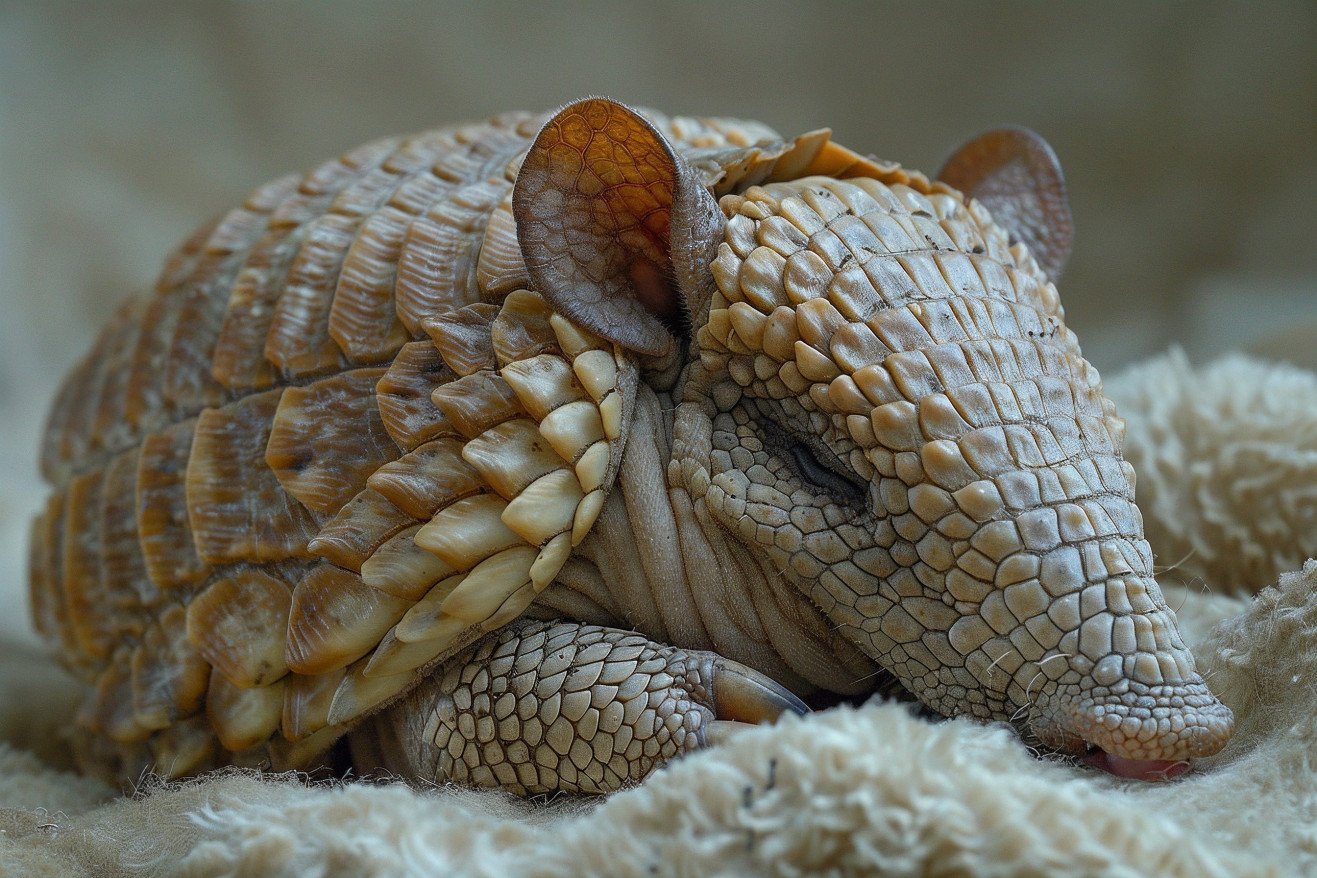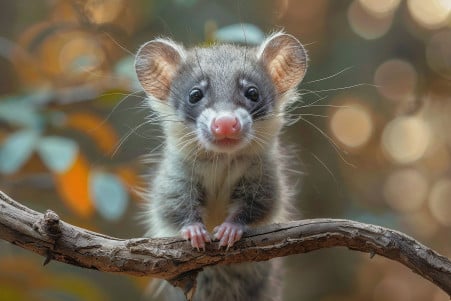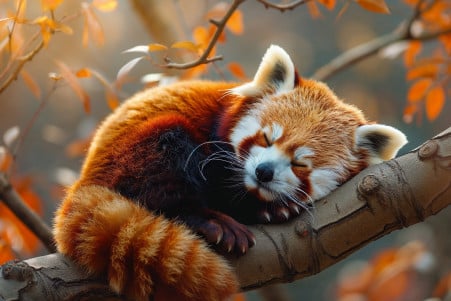Keeping an Armadillo as a Pet: Risks and Care Requirements
19 March 2024 • Updated 19 March 2024

Armadillos are fascinating creatures with their unique armor-like shells, but can they be kept as pets? Unfortunately, legal limitations, special care requirements, potential health issues such as leprosy, and the fact that they are nocturnal and burrowing animals all make armadillos poor candidates for domestication. Their need for lots of space to dig and a special diet also make it difficult to keep them as pets.
This article draws on a wide range of research in the fields of veterinary science, zoonotic disease research, and wildlife biology. It summarizes scholarly research and expert opinions to explain the many factors that influence armadillo behavior, their needs in the wild, and the potential health risks they present. This information will help explain the practical and ethical issues involved in keeping an armadillo as a pet.
Is it advisable to keep an armadillo as a pet?
Health Concerns Associated With Armadillos: Leprosy and More
As the focus on zoonotic diseases has grown, so has the attention on armadillos. Of the zoonotic diseases associated with armadillos, leprosy, which is caused by Mycobacterium leprae, is the most well-known. A review in PMC notes that armadillos are the only known natural reservoir of M. leprae and have been associated with the zoonotic transmission of leprosy in the southern United States and parts of Brazil.
While the risk of leprosy transmission from armadillos to humans is generally low, it is a concern when people have direct contact with the animals, such as through hunting and eating armadillo meat.
Given the high prevalence of leprosy in armadillos and the potential for human infection, it is important to understand the risks of exposure to these animals. The CDC recommends people avoid contact with armadillos for health reasons, even though the risk of leprosy transmission from armadillos to humans is very low.
In addition to leprosy, armadillos may carry other, less well-studied pathogens that could pose health risks. The Occupational Health and Safety Program suggests people reduce their risk of exposure to these pathogens by washing their hands frequently, wearing protective gloves, and seeking medical attention after they have been in contact with armadillos.
People who are thinking about keeping an armadillo as a pet should be aware of these risks, which further emphasizes the importance of understanding the natural history and needs of these animals.
Meeting the Environmental and Behavioral Needs of Armadillos
Armadillos are most commonly found in the Americas, where they live in a variety of habitats from rainforests to grasslands. According to the San Diego Zoo, armadillos are most at home in wetlands with sandy soil, where they can dig and forage. Armadillos are nocturnal and are very good at digging to find food, especially insects.
This is a behavior that is essential to their survival. According to Wikipedia, the nine-banded armadillo, the most common species in the United States, builds and maintains several burrows and is a solitary animal.
The behavioral and environmental needs of armadillos, especially their need to dig and forage, are a major obstacle to keeping them in captivity. It is nearly impossible to provide the kind of space and variety of environments that they need in a home.
According to Britannica, armadillos are such good diggers that they can dig burrows with up to six meters of tunnels and multiple entrances, a situation that would be impossible to accommodate in a home without compromising the structure of the building.
In addition, keeping armadillos in captivity raises ethical concerns. The environmental needs of armadillos are closely tied to their evolutionary history, as explained by Wikipedia. Armadillos have evolved to live in the wild, not in captivity.
Keeping an armadillo as a pet would mean that the animal would be forced to live in an environment that is not conducive to its natural behaviors. This would likely lead to a life of stress and even harm, which is a serious ethical concern when it comes to the domestication of these animals.
Legal and Ethical Implications of Keeping an Armadillo as a Pet
Potential pet owners considering keeping an armadillo must grapple with a number of legal and ethical concerns. The legal status of armadillos is not uniform across the United States, and many states have strict laws or outright bans on keeping them as pets.
In addition, as JRank observes, many armadillo species, including the giant and pink fairy armadillos, are listed as Endangered and are at an extremely high risk of extinction due to hunting and habitat loss.
On an ethical level, keeping wild animals as pets, including armadillos, is problematic. The Giant Armadillo Conservation Project, which is run by Arnaud Desbiez in the Cerrado of Brazil, and other conservation organizations have worked to raise awareness about the importance of the species as an ecosystem engineer and the threats it faces from hunting and habitat loss.
This work has helped to highlight the importance of protecting natural habitats and the ecological roles of species like the giant armadillo, which the Zoological Conservation Organization has listed as vulnerable to extinction.
These legal and ethical concerns are important for potential armadillo owners to understand. Wildlife protection laws are in place to protect these animals and the ecosystems they inhabit. People who are thinking about getting an armadillo as a pet need to be aware of these laws and think about the impact their actions will have on conservation and the long-term survival of armadillo species in the wild.
Meeting the Nutritional Needs of Armadillos
The natural diets of armadillos are both diverse and specialized, reflecting the different ecological roles of the species. For example, the Yellow Armadillo eats insects, plant material, and occasionally small vertebrates, while the nine-banded armadillo is primarily insectivorous. A study in Edentata found that the Yellow Armadillo eats a combination of insects and plants, with insects making up a large part of their diet.
However, it is very difficult to recreate this diet in captivity. A paper on ResearchGate found that captive nine-banded armadillos are often fed a diet that is very different from their natural diet, consisting of dog food, fruits, and supplements. This change in diet can lead to deficiencies, especially in fiber, which can impact digestive health.
Another study on PubMed found that armadillos prefer foods that are high in protein and that they have a particular preference for eggs in captivity. It is important to meet the complex nutritional needs of armadillos, as improper nutrition can lead to health problems. In addition, providing such a varied diet can be expensive and logistically challenging for potential pet owners.
This is something that potential pet owners need to be aware of when considering the responsibilities of keeping armadillos. It is not just a matter of feeding them—it is a matter of providing a diet that is in line with their evolutionary history, which is a tall order for even the most dedicated animal lover.
The Challenges of Meeting the Needs of Pet Armadillos
Meeting the needs of pet armadillos requires a level of care that is beyond the capacity of most people’s homes. The Spruce Pets explains that armadillos need room to roam and even burrow, and because they are nocturnal, they need enclosures that accommodate their nighttime activity.
To meet these needs, a pet owner would have to build a large outdoor enclosure that includes both sunny and shady areas, and in some cases, a wading pool for warmer climates, or an insulated barn for colder ones.
The stress of living in captivity and the challenge of creating an environment that meets their needs is why Exotic Animals for Sale says that armadillos are not common pets and recommends that anyone interested in owning one should consult with experienced handlers who can help them come up with creative solutions for housing. Because armadillos are such good diggers and climbers, they need an enclosure that is escape-proof and secure.
An assessment of the practicality of providing the necessary care for armadillos in a home environment reveals a number of obstacles. Pets on Mom.com points out that armadillos have a large space requirement, with a home range size of more than 21 acres in the wild, which makes them unsuitable for most homes.
The long-term challenges of keeping armadillos as pets include the potential for stress and behavioral changes in the animals and the commitment and changes in lifestyle that will be required of their owners.
When all of these factors are taken into account, it’s questionable whether keeping armadillos as pets is a good idea. The challenges of meeting their needs, their space requirements, and the potential for stress-related behavioral issues all suggest that domesticating armadanimals may not be in the best interests of the animals or the people who care for them.
Final Thoughts on Keeping Armadillos as Pets
This article has outlined many of the obstacles and dangers of keeping armadillos as pets, from the health risks of zoonotic diseases like leprosy to the challenges of meeting their environmental and behavioral needs. It’s clear that armadillos are not well-suited to life in captivity. This is further complicated by the legal and ethical issues surrounding pet ownership, as many states and municipalities have laws against keeping wild animals as pets.
We’ve also explored the complicated dietary needs and extensive care that armadillos require, which demonstrates the level of responsibility and expertise that’s required to care for them properly. Studies and information from organizations like the National Wildlife Federation and the Giant Armadillo Conservation Program have shown that it’s more important to protect these animals in their natural habitats than to try and force them to live in human ones.
In the end, we hope that you will make responsible, educated choices about pet ownership that take wildlife conservation into account. Think about the larger ecological implications of your decisions and the importance of preserving natural habitats. While armadillos are amazing animals, we must recognize that their place is in the wild, where they can contribute to the biodiversity that’s so important to the planet.


